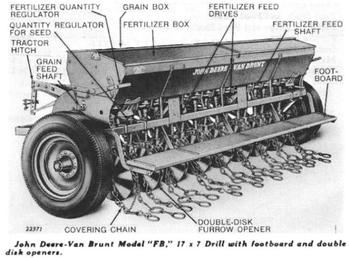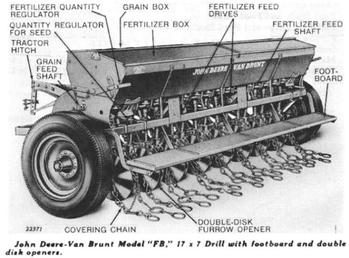Every year farmers are faced with many decisions, including the decision to budget for the purchase of new Certified seed, or to allocate time, labour and resources to clean and re-use your own saved seed.
If you are still considering your options, here are 5 things that could ruin your plan to use saved wheat seed this year:

You like using the latest and greatest in technology
Do you use old technology and equipment on your farm? No? Then why use old technology in your seed?!
New varieties can provide yield increases, new levels of disease resistance, and agronomic improvements – all things you may be looking for on your farm. In order to access these new and improved varieties, you will need to purchase Certified seed.
In Canada, farmers are allowed to save, clean and re-use seed from their own production for their own-use. However, production of varieties protected with Plant Breeders’ Rights are prohibited from being sold or traded with others for the purpose of planting seed.
You don’t test for germination, vigor and disease
If you are considering saving your crop to replant this year, it is important to invest the time and money into testing your seed for germination, vigor and disease. Seed may visually appear to be suitable, but in fact may have lost a significant percentage of germination over the winter’s storage. Similarly, while very advanced disease can be seen visually on kernels (and may be removed by sophisticated equipment such as a colour sorter), a lower incidence of seed borne disease may not be visible to the naked eye. An accredited seed lab like BioVision can test your seed for you to determine the quality before you plant.
Your seed has been improperly stored or handled
Seed is a living organism and can be damaged during harvest, transportation, handling and/or storage. Mechanical damage sometimes cannot be seen visually. For example, a small crack on the germ of the wheat seed during handling, will affect germination at seeding.
We’ve all heard stories of heated seed in a bin ruining the marketability of a farmer’s crop. In the same way, improper storage can harm a healthy seed, reducing germination and impairing establishment of the young seedling.
You’re trying to save money
Saved seed is not ‘free seed’, as it is sometimes perceived – in addition to the lost market opportunity for your grain, there is a cost for storage, cleaning, testing, elevation and trucking, labour and cleanout. In a recent study by the Alberta Government, they analyzed the cost of saved seed vs. Certified seed over a 10-year period. When considering all variables, in eight out of 10 years, the cost of Certified seed is less than seed pulled from the bin. When you factor in the likely yield benefits of new varieties, purchasing Certified wheat seed every year was lower cost.
Click here to read the full report
Your wheat seed is over 3 years old
Every production year further removed from the original Certified seed purchase, your seed will lose a percentage of its varietal purity. The disease resistance or yield performance you originally enjoyed in your wheat variety may start to disappear as your seed is contaminated with off-types, weed seeds and other volunteers.
It’s also important that you are sure of the class of your wheat when delivering it to the elevator. As Cereals Canada points out, it’s important to “Deliver what you Declare”. When you sign a Declaration of Eligibility affidavit at the elevator, you’re making a legal assertion that your grain is of the class you’ve declared. Remember this is a legally binding document, and any intentional or unintentional mistake could expose you to significant liability. Click here to read more.
Keep in mind that many wheat varieties will be reclassified by the Canadian Grain Commission on August 1, 2018. Is your variety moving to a different class? This will affect its marketability this fall. For a full list of varieties changing class click here.
When making the decision whether to buy new Certified seed from your local seed grower, or to go back to your own bin to use saved seed, make sure you are considering all of the potential issues that may arise.


